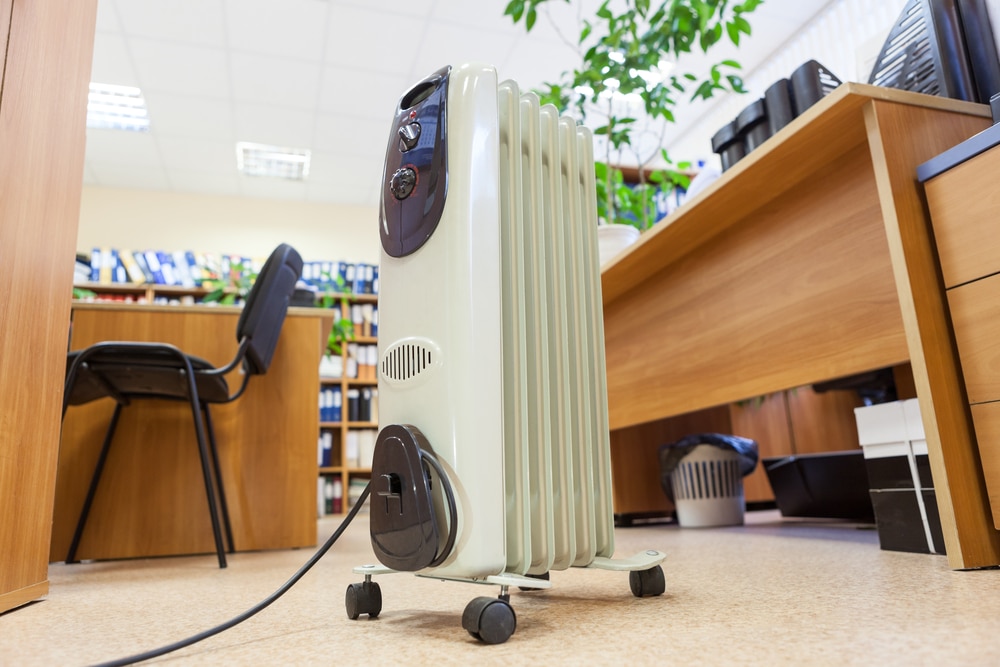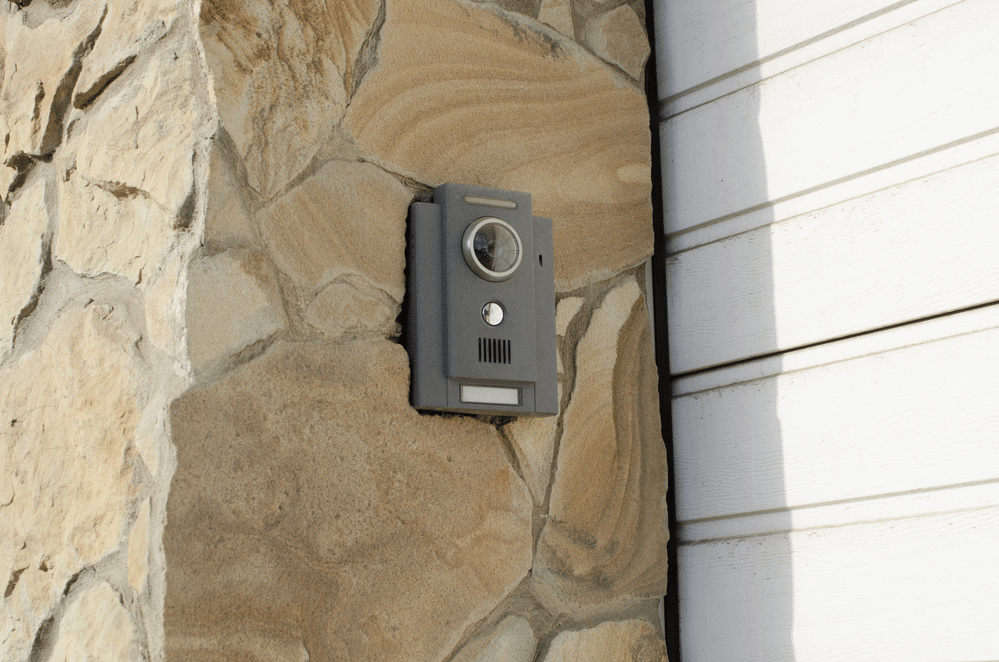Last Updated on
Are you curious about how does an oil filled radiator works? Does it really provide the warmth and energy savings that are promised or is it all just hot air (literally.)? We’re here to answer these questions and more, so if you’re wondering,” then this guide is for you. Find out everything there is to know about these heaters, from what makes them tick, to maintenance tips – we have all the answers.
Table of Contents:
- What is an Oil Filled Radiator?
- How Does an Oil Filled Radiator Work?
- Maintenance Tips for Oil Filled Radiators
- Alternatives to Oil Filled Radiators
- FAQs in Relation to How Does an Oil Filled Radiator Work
- Conclusion
What is an Oil Filled Radiator?
An oil filled radiator is a type of heating device that uses electricity to heat up an internal reservoir of oil. This heated oil then radiates warmth into the surrounding area, providing efficient and effective heating for your home or office. Oil filled radiators are often used as an alternative to traditional central heating systems, as they can be easily moved around and provide targeted warmth in specific areas.
Oil filled radiators have several advantages over other types of heaters. Firstly, they are much more energy-efficient than electric fan heaters or convection heaters, as the majority of their energy is converted directly into heat rather than being lost through air circulation. Secondly, they do not require any additional ventilation or ducting, like gas-powered models do – making them ideal for smaller spaces where installation may be difficult or impractical. Finally, since the unit does not need to be constantly running in order to maintain a comfortable temperature level (unlike most other forms of electric heater), it can help reduce your overall energy costs significantly over time.
An oil filled radiator is an efficient and economical way to heat your home, but how does it work? Read on to find out.
How Does an Oil Filled Radiator Work?

The heated oil then radiates warmth throughout the room, providing a comfortable and consistent temperature.
The process begins when you plug in the radiator and turn it on. This activates the electric element inside, which heats up the oil contained within the unit’s sealed chamber. As this happens, warm air rises from the top of the radiator while cooler air is drawn in at its base. This circulation helps distribute heat evenly throughout your home or office space.
To ensure maximum efficiency, most models come with adjustable thermostats and timers so you can set them to switch off automatically once they reach their desired temperature level or after a certain amount of time has elapsed – saving energy costs in the long run. Additionally, some models also feature digital displays for easy monitoring and control over settings such as power output levels and timer intervals.
In terms of safety features, many modern units are equipped with overheat protection systems that will shut down if temperatures become too high, preventing any potential fire hazards from occurring due to excessive use or malfunctioning parts. Furthermore, some models even have built-in frost protection functions which detect drops in ambient temperatures below 7°C (45°F) before switching on automatically to prevent pipes from freezing during cold winter months.
An oil filled radiator is a great way to heat your home efficiently and effectively. With proper maintenance, it can last for years – so make sure you take the time to learn how to keep yours running smoothly. Next, we’ll discuss some tips on maintaining an oil filled radiator.
Maintenance Tips for Oil Filled Radiators
Oil filled radiators are a great way to keep your home warm and cosy. They provide an efficient, cost-effective heating solution for those living in the UK. However, like any other appliance, they require regular maintenance to ensure that they continue working properly and safely. Here are some tips on how to maintain your oil filled radiator:
1. Cleaning – Make sure you clean your oil filled radiator regularly with a damp cloth or vacuum cleaner attachment. This will help prevent dust from clogging up the fins of the radiator which can reduce its efficiency over time.
2. Refilling with Oil – You should check the level of oil in your radiator every few months and top it up if necessary using specialised mineral-based oils available from most hardware stores or online retailers. It is important not to use vegetable oils as these can damage the internal components of the radiator over time and cause it to malfunction or even catch fire.
3. Safety Tips – When using an oil filled radiator always make sure that there is adequate ventilation around it so that fumes do not build up inside your home as this could be dangerous for you and your family’s health. Additionally, never cover or block off any vents on an oil filled radiator as this could lead to overheating which may result in a fire hazard.
By following these maintenance tips, you can ensure that your oil filled radiator works effectively and efficiently. However, if you’re looking for an alternative to the traditional oil filled radiator, there are a few options available. Let’s take a look at them in the next section.
Alternatives to Oil Filled Radiators
When it comes to home and garden heating, oil filled radiators are a popular choice. But they’re not the only option available. Electric radiators and convection heaters are two alternatives that offer their own advantages and disadvantages compared to oil filled radiators.
Electric Radiators:
Electric radiators come in a variety of shapes, sizes, styles, and wattages. They can be wall-mounted or free-standing, depending on your needs. The main advantage of electric radiators is that they don’t require any additional fuel source such as gas or oil – just plug them into an electrical outlet. However, electric models tend to be more expensive than other types of heating systems due to their higher energy consumption rates.
Convection Heaters:
Convection heaters work by using natural air currents within the room to distribute warmth evenly throughout the space without relying on fans or blowers for circulation. This makes them quieter than many other types of heating systems but also means that they take longer to warm up rooms compared with fan-forced models like electric radiators. On the plus side though, convection heaters are often cheaper than electric models so they may be worth considering if you’re looking for a budget-friendly solution for your home or garden heating needs.
Ultimately, which type of heater you choose will depend on your individual requirements; whether it is cost effectiveness, ease of installation or simply aesthetics that matter most when selecting a new system for your home or garden space. There is no one size fits all answer. Consider each option carefully before making a decision based on what works best for you personally in terms of both practicality and budgeting considerations alike. Then enjoy the added comfort provided by whichever model you decide upon.
FAQs in Relation to How Does an Oil Filled Radiator Work
Can you leave an oil filled radiator on all the time?

Yes, oil filled radiators can be left on all the time. However, it is important to ensure that they are not placed in a hazardous area and that there is adequate ventilation around them. It is also recommended to check the manufacturer’s instructions for any additional safety measures or maintenance requirements. Additionally, you should keep an eye on the temperature of your room and adjust the thermostat accordingly so as not to overheat it. Finally, always make sure to turn off your radiator when leaving home for extended periods of time.
Do oil heaters need to be refilled?
Yes, oil heaters need to be refilled. The amount of oil used will depend on the size and type of heater you have. Generally, it is recommended that you check your oil levels every month and refill as needed. It’s important to ensure that your tank is always at least half full in order for the heater to function properly and safely. Additionally, make sure you use only the correct type of fuel specified by the manufacturer when refilling your heater.
Do oil filled radiator heaters use much electricity?
Oil filled radiator heaters are a great way to provide efficient and cost-effective heating. They use electricity, but not as much as other types of electric heaters. On average, they consume about 1 kWh per hour for every 10 watts of power consumed. This means that a 1000 watt oil filled radiator heater will typically use around 100 kWh per day when running at full capacity. In comparison, traditional electric radiators can consume up to three times more energy than an oil filled radiator heater.
How effective are oil filled radiators?
Oil filled radiators are an effective way to heat your home. They provide a steady, consistent source of warmth and can be used in any room. They’re also energy efficient, with low running costs compared to other heating options. Plus, they don’t require much maintenance and come in a variety of sizes and styles so you can find one that fits your needs perfectly. In short, oil filled radiators are an ideal choice for anyone looking for an efficient way to keep their home warm this winter.
Conclusion
In conclusion, learning how does an oil filled radiator work is very beneficial. Oil filled radiators are a great way to heat your home or office space. They provide efficient and cost-effective heating solutions that can be used in almost any setting. With proper maintenance, an oil filled radiator will work for many years without needing repairs or replacements. Investing in one of these reliable and affordable heating solutions could be just what you need to keep your home warm during those cold winter months.
Paul is the type of person who never met a problem he couldn’t fix. He can always be found tinkering with something in his house, even if it isn’t broken! His tips and tricks are often shared on our site. He’s the one you call when something breaks because he has been known to improvise fixes for everything from leaky faucets to malfunctioning dryers.



